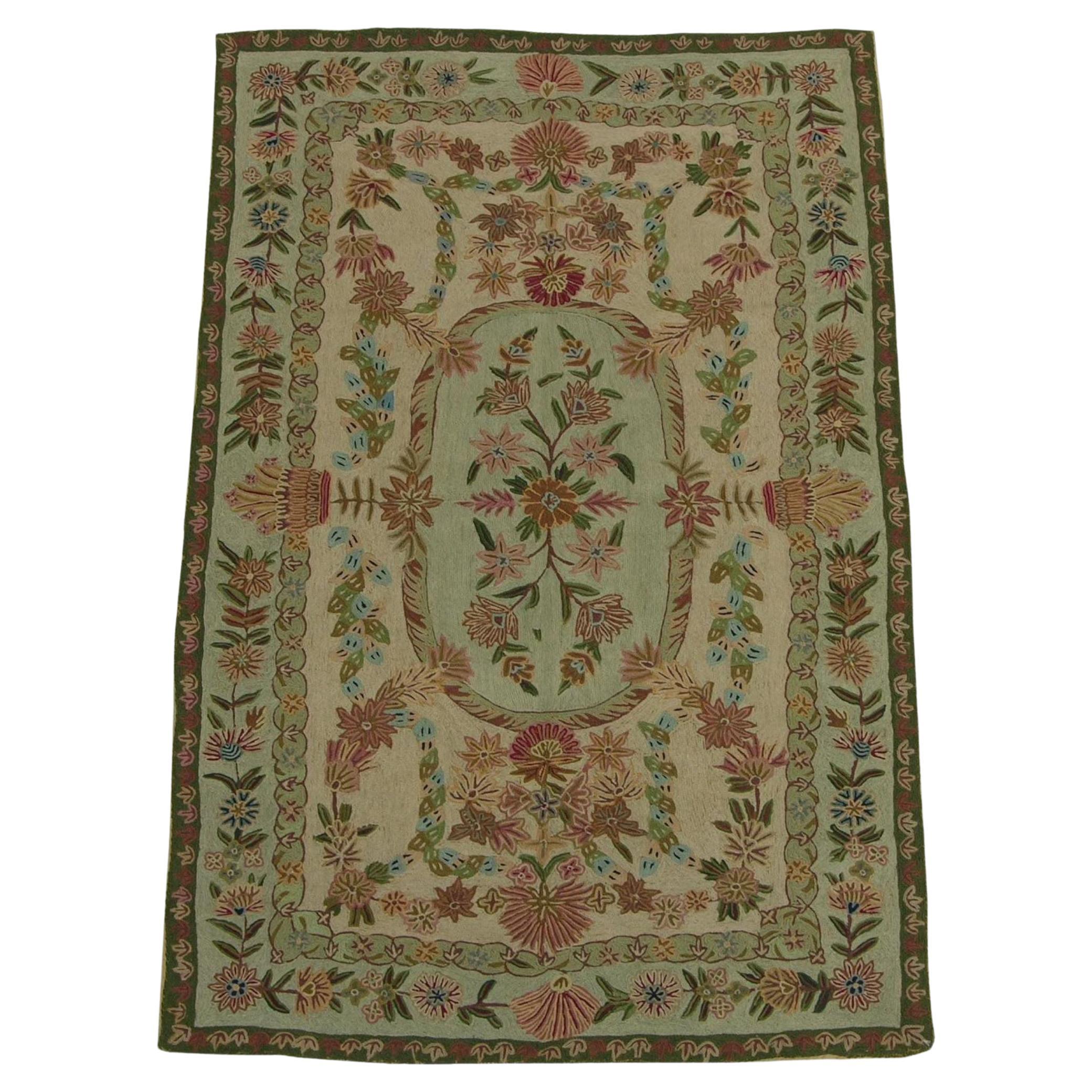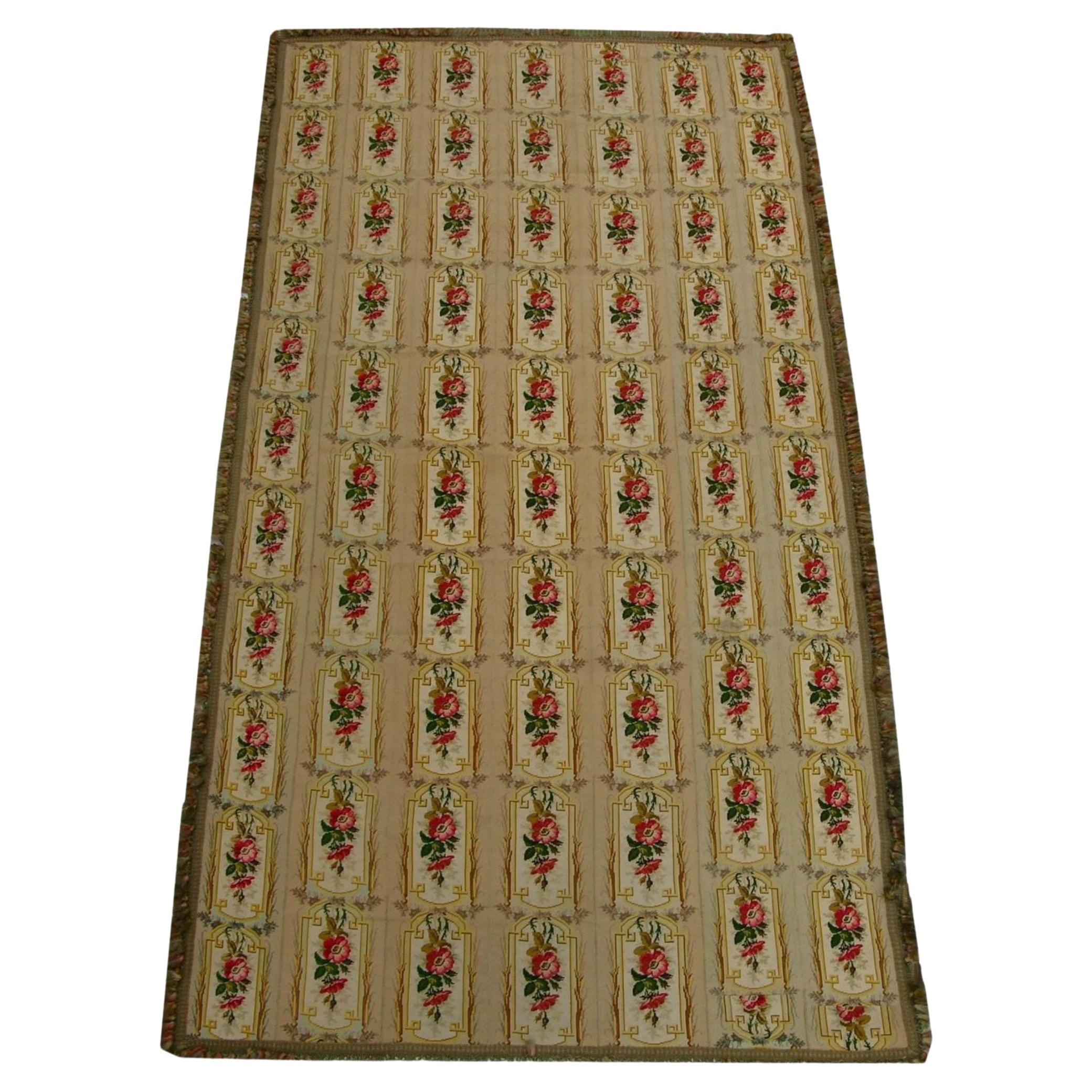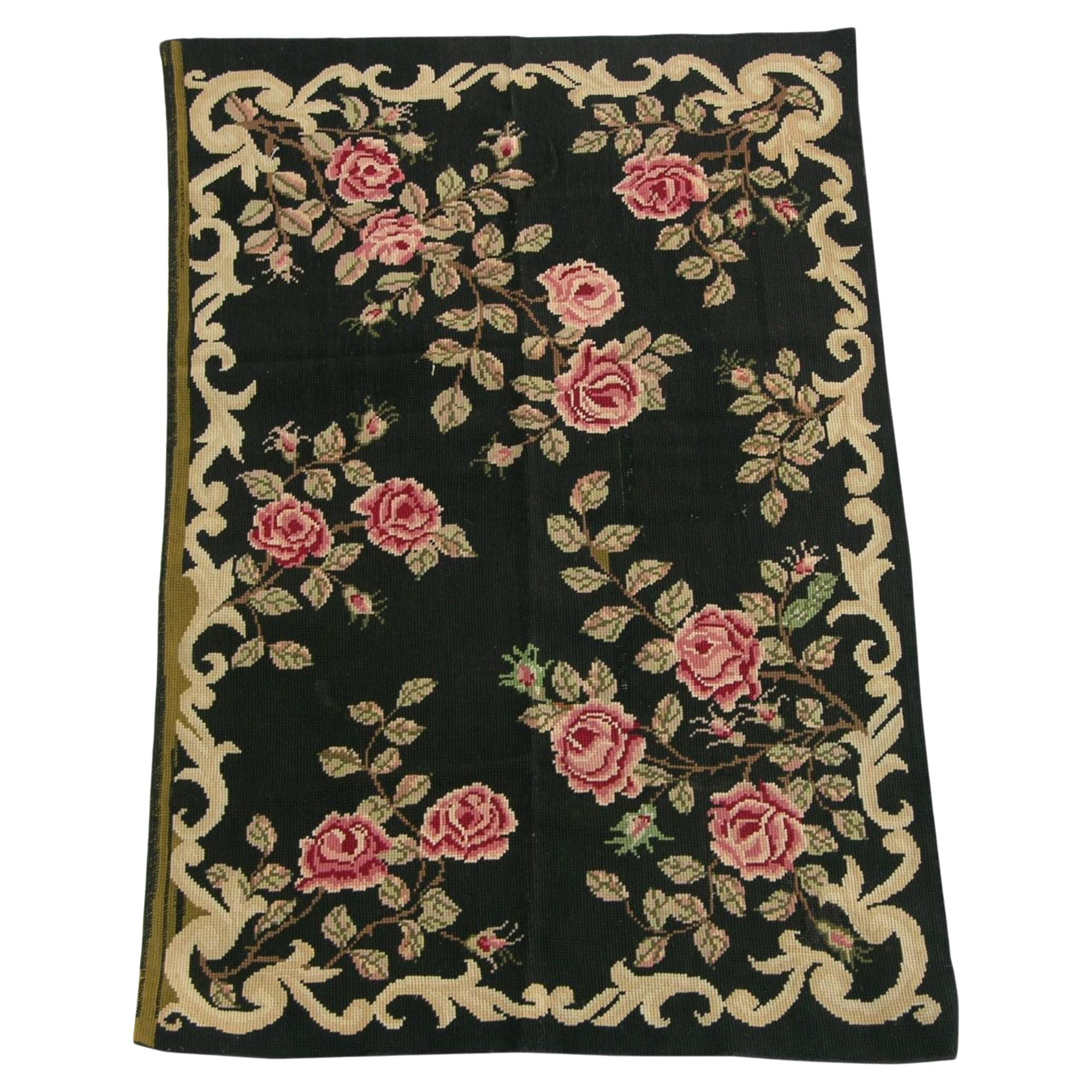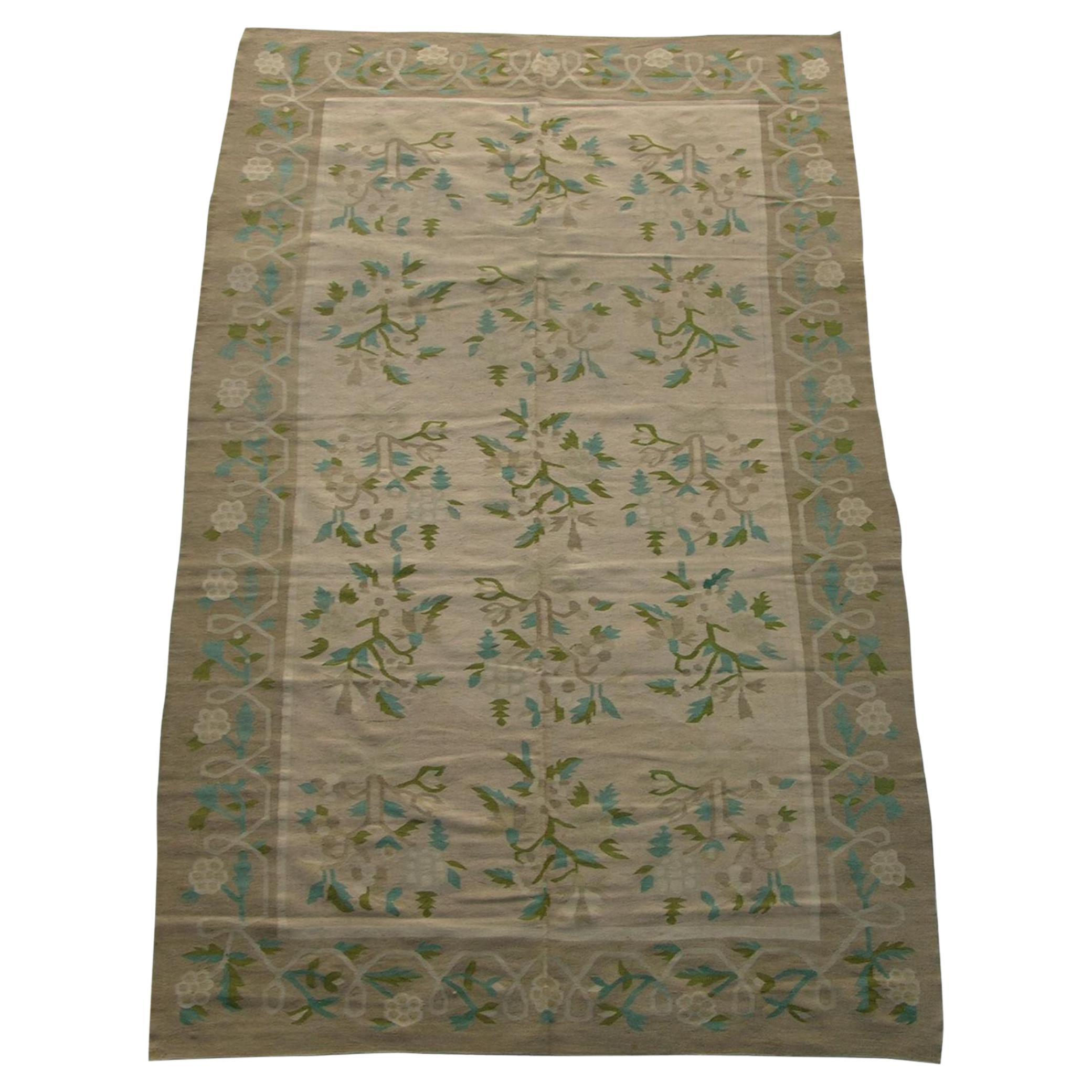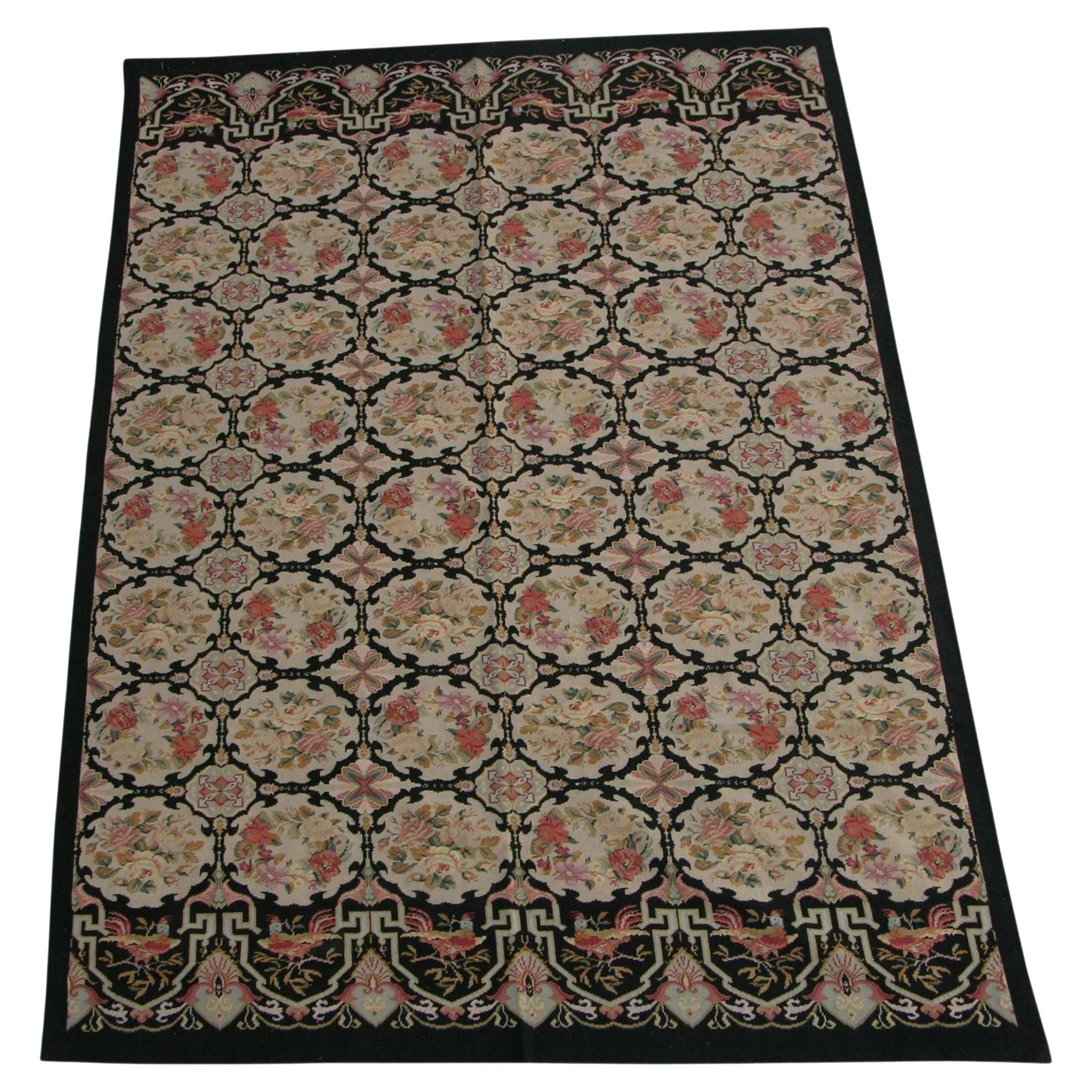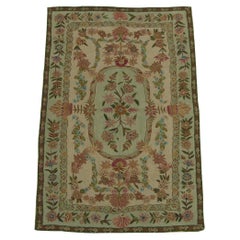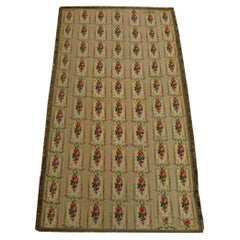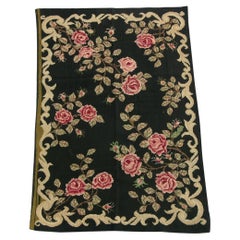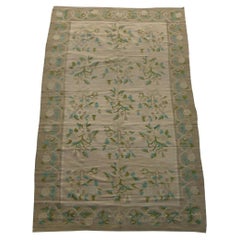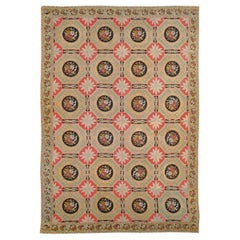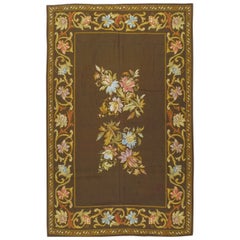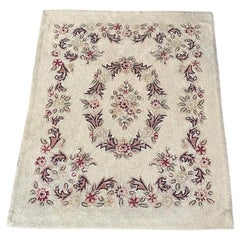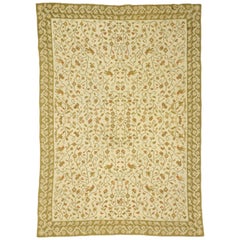Want more images or videos?
Request additional images or videos from the seller
1 of 5
Antique Needlepoint Floral Rug
$2,700
£2,048.70
€2,342.50
CA$3,771.17
A$4,193.03
CHF 2,189.37
MX$51,039.33
NOK 27,935.36
SEK 26,174.10
DKK 17,482.53
Shipping
Retrieving quote...The 1stDibs Promise:
Authenticity Guarantee,
Money-Back Guarantee,
24-Hour Cancellation
About the Item
Needlepoint rugs were created using the traditional needlework weaving technique that is used to make everyday items from furniture to carpets and artwork. However, it has a fascinating history both as a hobby and as an industry. When many people think of carpets, they think of pile carpets or flat weave kilims, but needlepoint has also been used to create beautiful carpets. These carpets are durable and an important part of carpet history.
About the Seller
5.0
Platinum Seller
Premium sellers with a 4.7+ rating and 24-hour response times
Established in 1920
1stDibs seller since 2023
63 sales on 1stDibs
Typical response time: <1 hour
- ShippingRetrieving quote...Shipping from: Los Angeles, US
- Return Policy
Authenticity Guarantee
In the unlikely event there’s an issue with an item’s authenticity, contact us within 1 year for a full refund. DetailsMoney-Back Guarantee
If your item is not as described, is damaged in transit, or does not arrive, contact us within 7 days for a full refund. Details24-Hour Cancellation
You have a 24-hour grace period in which to reconsider your purchase, with no questions asked.Vetted Professional Sellers
Our world-class sellers must adhere to strict standards for service and quality, maintaining the integrity of our listings.Price-Match Guarantee
If you find that a seller listed the same item for a lower price elsewhere, we’ll match it.Trusted Global Delivery
Our best-in-class carrier network provides specialized shipping options worldwide, including custom delivery.More From This Seller
View AllAntique Needlework Floral Design
Located in Los Angeles, US
Needlepoint rugs were created using the traditional needlework weaving technique that is used to make everyday items from furniture to carpets and artwork. However, it has a fascinat...
Category
Antique Early 1900s Other Russian and Scandinavian Rugs
Materials
Wool, Cotton
1920 Antique Floral Needlework Rug
Located in Los Angeles, US
Needlepoint rugs were created using the traditional needlework weaving technique that is used to make everyday items from furniture to carpets and artwork. However, it has a fascinat...
Category
Vintage 1920s Other Russian and Scandinavian Rugs
Materials
Wool, Cotton
Antique Needlework Floral Rug
Located in Los Angeles, US
Needlepoint rugs were created using the traditional needlework weaving technique that is used to make everyday items from furniture to carpets and artwork. However, it has a fascinat...
Category
Antique Early 1900s Asian Other Russian and Scandinavian Rugs
Materials
Wool, Cotton
Early 20th Century Antique Kilim Floral Design Rug
Located in Los Angeles, US
Ca. 1900 Antique Kilim Floral Design Rug
Category
Antique Early 1900s Other Russian and Scandinavian Rugs
Materials
Wool, Cotton
1950s Vintage Floral Design Needlepoint Rug
Located in Los Angeles, US
Ancient Roots Of Needlepoint Rugs
Archaeologists and scholars consider the roots of needlepoint to have been around 1500 BC. They consider the first needlepoint to include the fine diagonal stitches that were used to sew tents together by the ancient Egyptians. The art eventually evolved into tapestry weaving. However, a tapestry weaving differs significantly from needlepoint in that it uses a loom and vertical warp.
Tapestry weaving is closer to the weaving of kilims and pile rugs than canvas work. However, some still include tapestry weaving in the category of needlepoint because of the fine work that appeared during the late Renaissance. It can have a similar appearance to the untrained eye. Technically, tapestry weaving and needlepoint are not the same, and they do not use the same technique.
The first actual needlepoint rugs and needle-points began to appear in the late Renaissance. Needlepoint is worked by creating stitches on a stiff canvas. The canvas is typically made from jute or linen and is quite durable. Pieces from the Renaissance were used to cover footstools, chairs, pillows, bed headboards, and other furnishings. They were also used as table coverings and wall coverings. You could also find them on many small items such as purses, shoes, and various adornments for clothing.
During the Renaissance, the craft reached a high level of skill, and the designs became incredibly detailed and realistic. They mimicked many of the subjects and styles of famous paintings of the time. They created florals, still life designs, scenes, and geometric tiled pieces. Some of them mimicked the designs found in Persian Carpets.
Needlepoint reached its peak popularity in the 19th century when it was considered a proper occupation for a lady. Needlepoint and embroidery held a similar place in societal status at the time. During this time, the work became finer, with some of the canvas reaching a high level of detail. The level of detail is determined by counting the number of mesh in an inch. During this time petit point by French needlewomen could have a mesh count as high as 45 mesh. This allowed women to create highly intricate designs with incredible levels of detail.
Historical Needlepoint Carpets and Rugs
It is possible to find many antique pieces of needlepoint besides rugs. Needlepoint rugs were popular in France and Spain, where the technique was adapted to create highly intricate designs that mimicked the designs in architecture and fashion. They were popular because they were durable, and it could be fashioned into a variety of items. The canvases themselves were durable, and the wool that they used was also strong, which means that many of the pieces were able to withstand daily use. We have many artifacts that have survived from this time period.
Needlepoint rugs are important collectibles because they are different from the pile rugs and kilims that are typically found on the market. Needlepoint carpets are special because they take many hours to create, especially larger works. Needlepoint pieces of any type became popular throughout Europe during the 19th century. It is still a popular hobby today, but perhaps one of the most interesting stories is that of the Portuguese needlewomen of Arraiolos.
The story of these women and their beautiful carpets begins in 1492. Needlepoint was a popular occupation in Spain, which had a large population of Moors and Jews. They were an integral part of Spanish culture. However, in 1492, Queen Isabella of Spain issued a proclamation that gave these ethnic groups the order to pack their bags and board ships headed...
Category
Vintage 1950s Other Russian and Scandinavian Rugs
Materials
Wool
Early 20th Century Antique Floral Bessarabian Kilim Rug
Located in Los Angeles, US
Antique rugs that are called “Kilim rugs”, primarily refer to a type of flat weave rug that was produced without knotted pile. Because these antique rugs are found across the globe, ...
Category
Early 20th Century Other Russian and Scandinavian Rugs
Materials
Wool, Cotton
You May Also Like
Early 20th Century Antique English Needlepoint Large Carpet
Located in New York, NY
An antique English Needlepoint large carpet handmade during the 21st century.
Measures: 13' 1" x 18' 8"
Category
Early 20th Century English Neoclassical Western European Rugs
Materials
Wool
Antique Ukrainian Needlepoint Rug
Located in New York, NY
An antique Ukrainian needlepoint carpet from the second quarter of the 20th century. A medallion of elegant floral blossoms sits atop a brown minimalistic background confined by a gr...
Category
Vintage 1930s Ukrainian Arts and Crafts Russian and Scandinavian Rugs
Materials
Wool
$4,320 Sale Price
20% Off
Vintage American Hand-Hooked Floral Rug in Colonial Revival Style
Located in Los Angeles, CA
Condition: Original Vintage Condition
Materials: Hand-Knotted Wool
Style: American Colonial Revival
This vintage American hand-hooked rug dates from the 1940s–60s and features a cha...
Category
Vintage 1950s American American Colonial North and South American Rugs
Materials
Wool
Antique Arraiolos Rug with European Country Charm, Portuguese Needlepoint Rug
Located in Dallas, TX
77210 Antique Portuguese Needlepoint Arraiolos Rug, 07’11 x 11’02. Arraiolos rugs are a celebrated form of traditional Portuguese craftsmanship, originating from the town of Arraiolo...
Category
Early 20th Century Portuguese Country Western European Rugs
Materials
Wool
$3,920 Sale Price
43% Off
Fine Antique English Needlepoint Rug
Located in Milan, IT
A refined English needlework distinguished by the horizontal arrangement of a centralised motif, this being composed of a delicately rendered floral bouquet in a basket on an ivory o...
Category
Antique 1890s British Victorian Western European Rugs
Materials
Wool
Portuguese Needlepoint Rug Traditional Wool Floral Rugs Handwoven Carpet
Located in Wembley, GB
Are you on the lookout for a new carpet to enhance your living room or bedroom? This Beautiful rug could make the perfect accessory. This elegant wool needlepoint is a classic example of a modern Portuguese style rug woven by hand in China in the early 21st century. The design has been delicately woven with an asymmetrical floral pattern made up of brown, pink, green and mustard accents on a subtle cream background. The border has been decorated with a repeating pattern design and is finished with a fringed edge.
Constructed with only the best locally sourced materials with traditional techniques this fine wool rug is sure to last for generations. The fine materials used include hand-spun wool and cotton that have been organically dyed with vegetable dyeing techniques. This rug is in excellent condition. Ready for use in any home or office environment.
Portuguese needlepoint rug traditional wool floral rugs...
Category
2010s Chinese Country Chinese and East Asian Rugs
Materials
Wool, Cotton, Natural Fiber, Organic Material
$394 Sale Price / item
20% Off
More Ways To Browse
Antique Needlepoint Rugs
Hobbies Antique Furniture
Stingray Table
Dining Table With Wheels
French Brass Console
Hand Hammer Sterling
Low Black Coffee Table
Pair Of French Consoles
Tile Top Tables
Antique Gold Rimmed Glasses
Antique Wood Kitchen Tables
Art By Aldo
Circa 1900 Chair
Crystal Trees
Danish Phone
Hand Painted Portugal
Mid Century 2 Seater Sofa
Plant Stool
